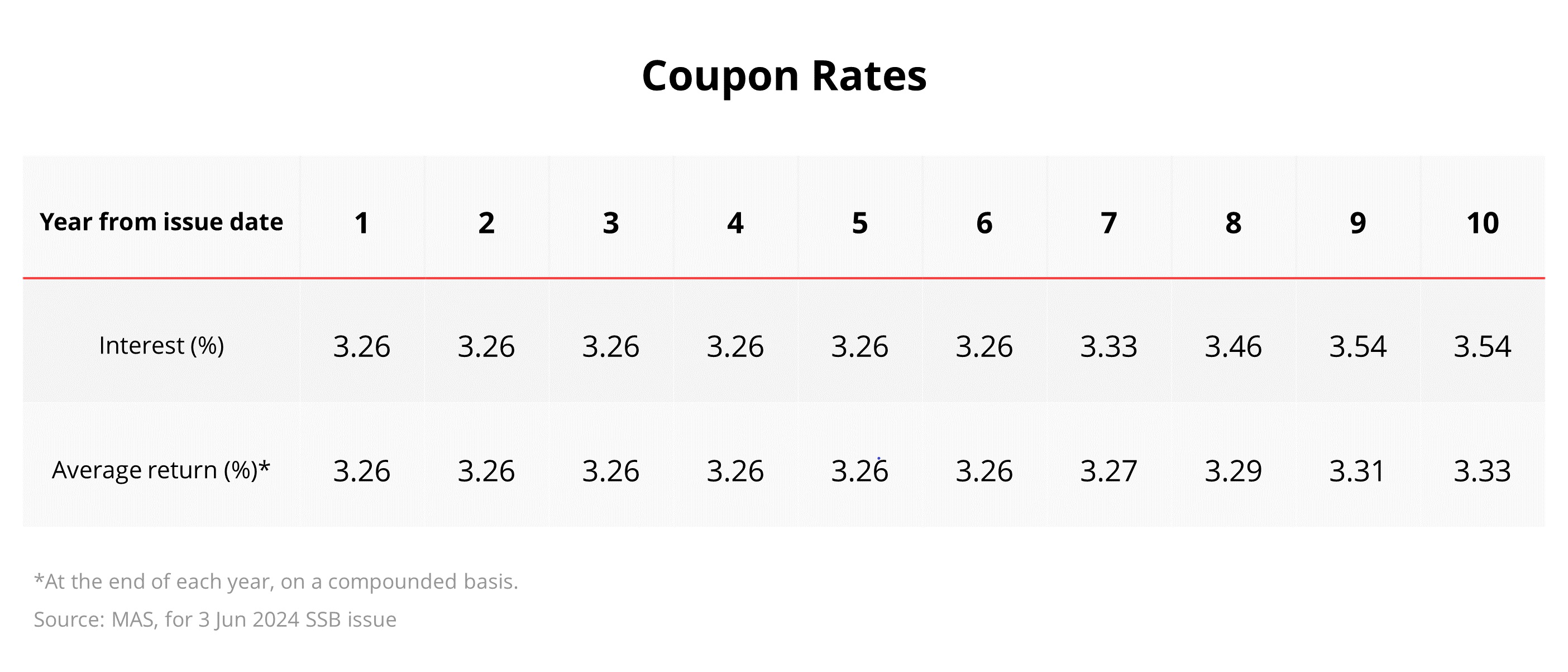How to build passive income streams
![]()
If you’ve only got a minute:
- Having additional sources of income helps to buffer against the risk of unexpected job loss or increased expenses.
- Passive income is income earned with minimal maintenance or day-to-day effort.
- Examples of passive income include income from investment property, investments and insurance plans, such as rental, dividends, bond coupons, interest, and annuity payouts.
- Understand your financial goals, risk tolerance, and time horizon before making any investment decisions.
![]()
When it comes to investing, most of us are familiar with the concept of diversification – "Don’t put all your eggs in one basket.” The same can be applied to our sources of income.
Having an additional stream of income helps strengthen your financial situation, provide relief in the event of unexpected circumstances (e.g. job loss) as well as play a crucial role in bolstering your retirement lifestyle.
We can diversify our income sources by building additional active or passive streams of income. These include investing, side hustles, or other means.
Sources of passive income
Passive income broadly refers to income that is earned with little maintenance or day-to-day labour. In contrast with active income which is earned through putting your nose to the grindstone, passive income generally puts your assets to work instead of you.
However, the old adage of “no pain no gain” still holds true. Getting started on building a passive income stream requires you to do your due diligence in understanding the different tools available and choosing which to use.
Here are 6 investment tools that can help you earn passive income.
Before making any investment decisions, ensure that you have emergency funds of at least 3 to 6 months set aside (12 months if you are a freelancer), and know your investment capital, risk tolerance, financial goals, and time horizon.
Read more: Which type of investor are you?

1. Bonds
Bonds are a type of debt instrument issued by governments or companies to raise capital for their activities. They come with a promise of repayment of principal with interest, either upon maturity, or in the form of regular coupon payments to the bond investor.
Bond coupons form a passive income stream.
Singapore Government Securities (SGS) are issued and backed by the Singapore government, making them a relatively low-risk investment. Here are 2 types of SGS that provide a stream of income.
Singapore Government Bonds
Singapore Government Bonds have tenors ranging from 2 to 50 years. They pay a fixed coupon interest every 6 months throughout the bond tenor.
For example, if you buy S$10,000 worth of the 50-year Green SGS bond with a coupon rate of 3% p.a., you would be getting S$300 in the form of 2 interest payments of S$150 each, every year. These payments will be made to you for as long as you hold the bond, or until it matures.
If you need the funds prior to the maturity of the bond, you can sell the bond in the secondary market. Bear in mind that the bond price may rise or fall before maturity.
Singapore Savings Bonds
Singapore Savings Bonds (SSBs) are a type of SGS with 10-year tenors that offer a step-up interest payable half-yearly. This means the bond’s coupon rate progressively increases over the tenor of the bond until its maturity date.
Should you need your funds prior to maturity of the bond, you can redeem your bonds and receive your principal amount back in full without penalty (except for an administrative fee of S$2). By redeeming your bonds early, you will be forgoing the future higher coupon payments of the bond.
You can calculate your projected returns using the Savings Bonds Interest Calculator.

Since coupon interest is only paid every 6 months, some investors use a strategy called the "SSB ladder" to achieve a regular income flow. They purchase SSBs for 6 consecutive months, resulting in a monthly stream of income when each bond pays its coupon.
Read more: Investing in SSBs
Corporate bonds
These are bonds issued by companies to raise funds, and usually have an entry level of about S$250,000. This relatively high barrier makes it a less viable option for most retail investors.
That being said, they are still able to invest in such bonds through pooled investment instruments that invest in equities, fixed income and/or other assets. Examples of these are exchange-traded funds (ETFs) and unit trusts. You can also gain exposure to corporate bonds through investing in robo-advisors like DBS digiPortfolio.
These products invest into a wide variety of companies across different geographies and sectors, providing diversification while requiring relatively little cash outlay.
Read more: A beginner’s guide to bonds
Find out more about: Unit Trust Investment Online with DBS

2. Dividend equities
Having a dividend-paying stock portfolio is another way to earn passive income. You can do this by investing in blue-chip stocks, which are shares of well recognised, understood, established, and publicly traded companies.
Blue-chip companies tend to have a long-standing history of dependable earnings, a steady growth outlook, and pay stable dividends to their shareholders. Dividend stocks usually offer payouts to investors on a regular basis, usually annually, semi-annually (every 6 months), or quarterly (every 3 months).
Successful dividend investing requires you to stock pick, which is something not many investors have the time or knowledge to do. If committing to studying individual stocks is not something you are inclined towards, consider other options like ETFs, unit trusts and robo-advisors, which provide diversification across different markets and sectors.
Read more: Diversify to help manage investment risks
Find out more about: DBS Vickers Online Account
3. Reits
While investing in property is a well-known way to generate an additional stream of income through renting, it does come with a high initial cash outlay and the hassle of having to manage the property.
Real Estate Investment trusts (Reits) are a lower-cost, well diversified alternative to get passive income through property. Reit investors gain access to a diversified range of income generating real estate assets, from shopping malls to office and hotels.
Singapore Reits (S-Reits) are required to distribute at least 90% of their annual rental income as dividends to their investors. These dividends are usually paid out at least twice a year, making it a suitable source of regular side income.
There are also Reit ETFs which give you diversified exposure to the asset class.
Read more: What you need to know about Reits
Practical ways to invest in Reits

4. Robo-advisors
Investing in dividend-paying stocks, Reits, and pooled investment instruments allow you to build passive streams of income. However, they do still require you to pick and choose your own counters in building your portfolio.
If you prefer an even less hands-on approach, you can invest through robo-advisors. These are digital platforms that provide automated, algorithm-driven investment services, in accordance with your risk appetite and investment preferences.
DBS digiPortfolio is a hybrid robo-advisor, meaning that it combines the professional expertise of a team of DBS portfolio managers and the technical benefits of a robo-advisor in constructing your portfolio.
With DBS digiPortfolio’s Income Portfolio, you can start investing with as little as S$1,000. Receive a regular quarterly income from a diversified global portfolio, through exposure to Reits, dividend equities, and bonds.
The platform also offers Retirement digiPortfolio where the asset allocation is adjusted automatically as you move towards your retirement age. It can provide a passive stream of income during your golden years when you draw down from your portfolio.
Read more: digiPortfolio: A robo-advisor for all
Find out more about: digiPortfolio on digibank
5. Insurance savings plans
Besides investing, there is a wide range of insurance products such as annuities and retirement income plans that can provide a stream of income and even some potential upside gains. Examples of such plans include the Manulife IncomeSecure, Manulife IncomeGen (II), and RetireSavvy.
Unlike investments, most insurance plans have a protection component. Among other things, they tend to have lower returns and cannot be directly compared like for like to investments.
When choosing your policy, bear in mind that all policies come with different features, premium terms, and payout periods. In the case of long-term insurance plans, you must be prepared for a long period of financial commitment as early surrender of policies often lead to a loss in your initial capital.
Read more: 4 types of insurance plans to boost your retirement income

6. CPF LIFE
The CPF Lifelong Income For the Elderly (CPF LIFE) is a national annuity scheme that provides a monthly payout starting from between the ages of 65 and 70, for as long as you live.
When you join CPF LIFE, the premium for your plan will be paid from your CPF Retirement Account (RA) balances into the Lifelong Income Fund. This in turn generates the CPF LIFE monthly payouts, continuing even if your full initial premium amount is used up. An exception is the CPF LIFE Basic Plan where the payouts will be paid from the RA first until it is depleted, before coming from the Lifelong Income Fund.
The amount you receive will depend on your RA balance when you join the scheme, and which CPF LIFE plan you opt for. Starting to set aside CPF savings earlier in life will allow you to benefit from the compounding power of interest on your CPF accounts.
Read more: How CPF LIFE can help in your retirement
In summary
Ultimately, there are many ways to earn passive income, whether now or in your retirement years. Regardless of which method you choose, it will require discipline, time, and patience, in order to enjoy the fruits of your investments.
When it comes to building additional streams of passive income through equities, remember to pick dividend-paying stocks, Reits, ETFs, unit trusts or income funds from robo-advisor portfolios. If you do not need passive income streams now, leverage investments that enable you to compound your monies over time now so as to draw down in the future.
Starting early allows you to harness the power of compound interest over a longer period of time, so take the first step to building additional income streams today!
Ready to start?
Need help selecting an investment? Try ‘Make Your Money Work Harder’ on digibank to receive specific investment picks based on your objectives, risk profile and preferences.
Invest with DBS Invest with POSB
Speak to the Wealth Planning Manager today for a financial health check and how you can better plan your finances.
Disclaimers and Important Notice
This article is meant for information only and should not be relied upon as financial advice. Before making any decision to buy, sell or hold any investment or insurance product, you should seek advice from a financial adviser regarding its suitability.
All investments come with risks and you can lose money on your investment. Invest only if you understand and can monitor your investment. Diversify your investments and avoid investing a large portion of your money in a single product issuer.
Disclaimer for Investment and Life Insurance Products








That's great to hear. Anything you'd like to add? (Optional)
We’re sorry to hear that. How can we do better? (Optional)